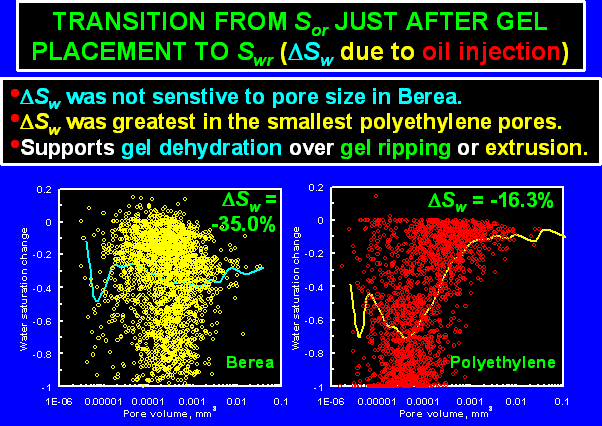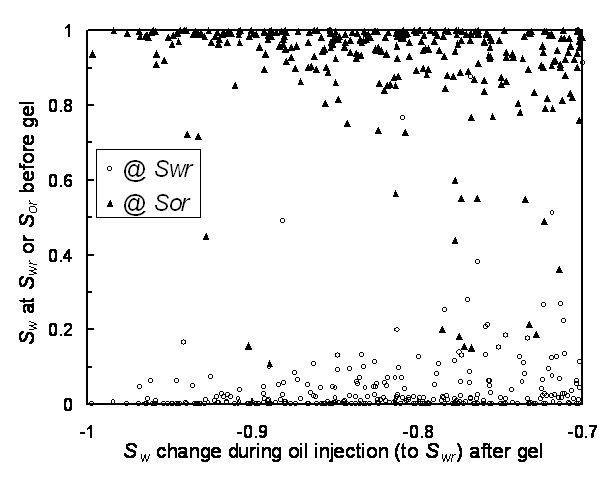Water Drainage from Berea: Oil Injection Reduced Gel Volume
During oil injection after gel formation, oil saturation increased by 35% (Table 2). Figure 14 shows that most (95.2% of the total) pores gained oil (lost water) when oil was injected after gel placement. Oil effects on the gel were insensitive to pore size. Average water saturation (solid curve in Figure 14) decreased by ~35% regardless of pore size. Assuming that gel occupied all of the aqueous pore space, the oil apparently reduced the volume of the gel by 55% (water saturation was 63.7% immediately before, and 28.7% after, oil injection). The pressure gradients during these experiments were limited so that they never exceeded those applied before the gel was placed. Therefore, it seems unlikely that reduction in gel volume occurred because of exposure to excessive pressure gradients (i.e., extrusion of the gel from the core).


Figure 15 provides additional insight into the process of gel volume reduction during oil injection. This plot shows the 300 pores (1/7 of total) that experienced the greatest increase in oil saturation (decrease in water saturation) during the process of oil injection after gel placement. Before gel placement, these pores were nearly full of oil at Swr and were nearly full of water at Sor. Thus, oil and water both flowed freely into and filled these pores before gel placement. They were also easily accessible to oil after gel.
